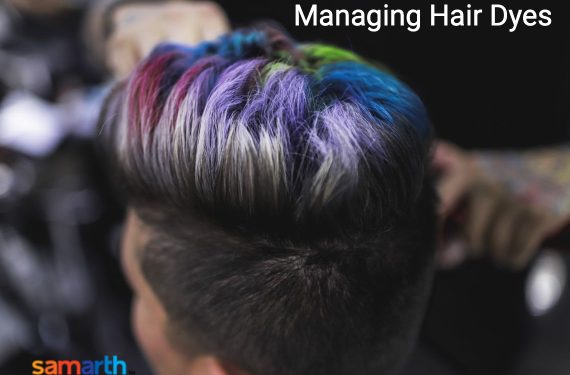One of the irreversible changes that we experience as we age is the greying of hair. While some are quite lucky to have naturally black hair quite into the fifties and sixties, many start using hair dyes as early as the forties. There are quite a few who prefer to keep the natural look ‘salt and pepper’ look and keep the silver look. It all depends on individual choices. Some believe that it is imperative to have black hair to look young and attractive, while others choose to be natural.
Of course, some may want hair coloured blue, red, copper, burgundy, and brown and so on. Some believe in experimenting and living it up, and perhaps, that is why it is important to understand hair dyes. You find hair dyes of all sorts in multiple colour variants in the markets these days. While most of them are simple DIY types which you can purchase and apply at home, some may need help from Salon specialists.
However, the important thing to note about hair dyes is that most of them use chemicals of some sort. These may cause an allergy to a few people; at times mild, and in others, a serious complication from hair dye allergy is also seen. Despite the claims of natural components, it is important to understand what chemicals may have gone into the hair dye and whether it is safe. It is equally important to know if you have a hair dye allergy and avoid a dye altogether.

Join Now >
All about hair dye allergy
Most hair dye packs come with a warning that you need to test it out before a complete hair application. Instructions for the same are usually found on the pack labels. In many cases, they advise you to apply a small patch near the back of your ear and wait it out for 48 hours for any adverse reaction. It may be a good idea to follow this to avoid any complications.
Many a time, we may be having minor hair dye allergy and not realising it. The minor allergy could manifest as itching in the scalp, neck or nape. The serious allergy may result in redness, inflammation, stinging or burning sensation, rashes, discolouration, etc. It need not always be on the scalp and may appear on the face, nape, neck, etc. within 48 hours of applying the hair dye. Very rarely, a severe allergy could result in anaphylaxis, which could be fatal. Hence, if you have used hair dyes, it may be a good idea to observe any minor or serious symptoms and get yourself checked for allergies.
The reason for the hair dye allergy is mainly an allergen called para-phenylenediamine (PPD) which is present in synthetic colours. The other allergens that can cause trouble are Cobalt, Ammonia, Peroxide, Glyceryl thioglycolate and Resorcinol.
How to counter allergies?
For serious allergic conditions, it is best to visit a specialist and avail proper treatment. The doctor may provide you with internal and external medicines to counter allergic reactions. Both these options aim to reduce skin irritation and to cool your body and bring down the reactions.
For the scalp’s minor allergies, you could try natural options like applying honey, fresh aloe vera gel, and applying coconut, olive, and sesame oils. Besides, you could also try a yoghurt cum lemon juice mask or an oatmeal bath. All these help reduce symptoms like itching, rashes, inflammation, etc. Herbs like mint and basil are also good options to reduce the irritation caused due to the hair dye.
Of course, the best option is to avoid the hair dye if you are allergic to it and shift to some natural options. If not, choose the hair dye very carefully, by looking through the ingredients to ensure it does not have any harmful allergens. Follow the patch test before trying out any new hair colour.
The options
In India, especially, one of the natural options preferred to hair dyes is the henna or Mehendi. Henna is a natural hair dye prepared from the henna tree, known as the mignonette tree and the Egyptian privet. This is typically used to create intricate designs on hands and legs, during festivals and weddings. Most Indian weddings have a ‘Mehendi’ ceremony as well. It is usually ground to a paste, or dried and powdered to apply to the body parts.
Many natural hair dyes have henna as an ingredient, while few people prepare it at home, in a fully organic way. It typically gives out a dark red, brownish orange colour on the body parts, and even on the hair, when applied. Today, this is being used in many countries across the world, as a natural colouring agent. The other natural alternatives that can be explored are Black Walnut hair dye, Indigo and vegetable dyes.











